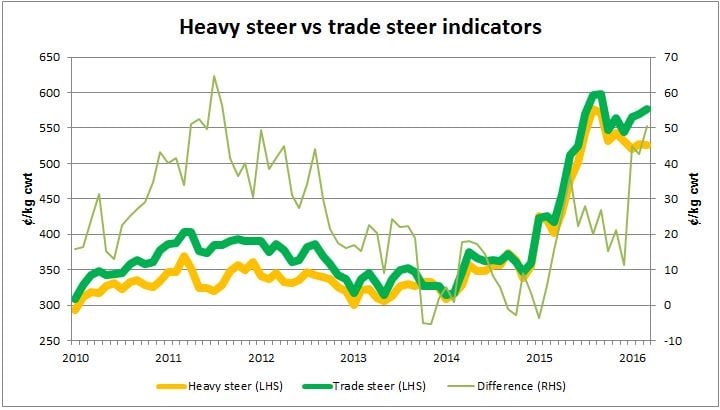Premium for trade steers doubles
The national saleyard trade steer indicator stretched to a 51¢/kg cwt premium over heavy steers during March – more than double the five-year March average of 24¢.

The trade steer indicator (330-400 kg C3) has continuously trended higher this year, buoyed by growing competition for a diminishing pool of young cattle by some restockers, feedlots and processors. The trade steer indicator averaged 577¢/kg cwt in March, up 38% from the corresponding month last year.
In contrast, the heavy steer indicator (500-600 kg C4) has moved lower, heavily influenced by the corresponding weakening US beef market and the (unexpectedly) strengthening A$. During March, the heavy steer indicator averaged 526¢/kg cwt, up 31% year-on-year.
While the current spread between the two saleyard indicators is not a record, it is at historically high levels. The last time a similar value occurred was from mid-2010 through to mid-2012, as a result of very strong restocking demand at a time of short cattle availability. After this time, the gap closed as drought gripped Australia’s eastern states, causing prices for the abundant supply of young cattle to weaken, while shorter supplies of heavy cattle meant that indicator was more resilient.
Considering Australia is now in the early stages of a national herd rebuild, the price difference between trade and heavy steers has the potential to remain large for an extended period. For restockers, the extent at which the gap stays wide needs to be weighed up against the possible rate of decline at the heavier end of the market. This will have a strong bearing on the profitability of any trade.



